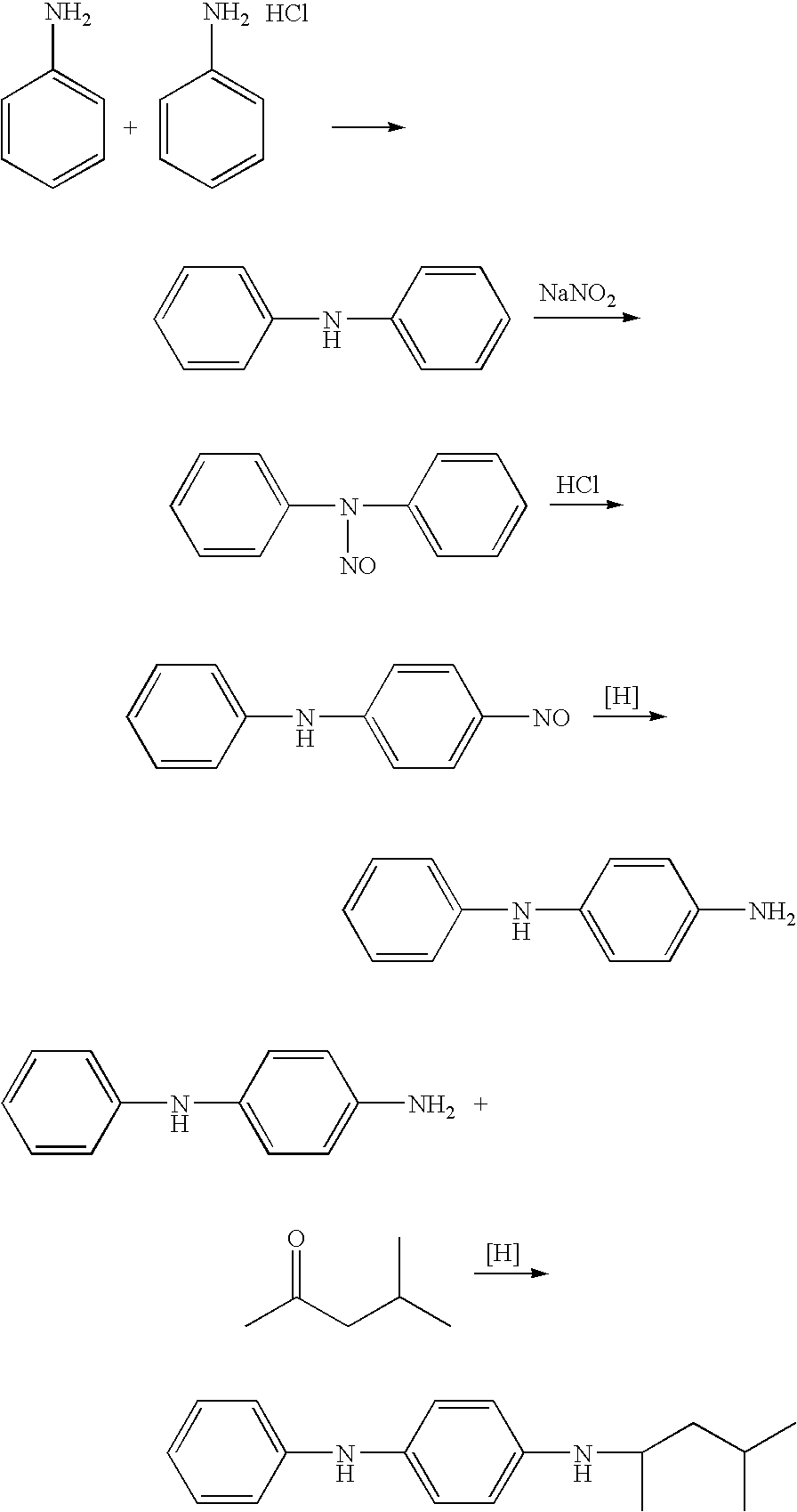Process for producing antiaging agent, vulcanization accelerator or modified natural rubber by means of microorganism or plant
a technology of vulcanization accelerator and natural rubber, which is applied in the field of process for producing antiaging agents, vulcanization accelerators or modified natural rubber by means of microorganisms or plants, can solve problems such as global warming, and achieve the effect of reducing petroleum resources
- Summary
- Abstract
- Description
- Claims
- Application Information
AI Technical Summary
Benefits of technology
Problems solved by technology
Method used
Image
Examples
examples
[0035](Example of Production of Benzoic Acid using a Microorganism)
[0036]As a starting material, glucose was controlled to have a concentration of 5%. Al culture medium was heat-treated at 120° C. for 20 minutes and cooled to room temperature. Streptomyces Maritimus was cultured at pH 7.5, 28° C., 170 rpm, over 4 to 5 days under aerobic condition in the culture medium. Diethyl ether was then added to the culture medium and extraction was carried out twice. A crude extract was concentrated by an evaporator and purified by flash chromatography using a column filled with silica gel 60. Benzoic acid was identified by NMR and IR.
(Example of Production of Benzoic Acid from a Plant)
[0037]An amount of 25 g of ground Siam benzoin resin was dispersed in 500 ml of a solution (pH of 3) prepared by adding hydrochloric acid to water and was extracted five times by using 20 v / v% of diethylether in a separatory funnel. The combined ether layer was evaporated to remove solvents until the volume ther...
example of
(Example of Production of Antiaging Agent from Aniline)
[0039]To a flask equipped with an acetone introduction apparatus, a distillation apparatus, a thermometer and an agitator were added 190 g (2.0 mol) of aniline which was obtained through the production method and hydrochloric acid (0.20 mol) as an acidic catalyst, and then heated to 140° C. The reaction system was kept at 140° C., and 580 g (10 mol) of acetone was continuously supplied to the reaction system for 6 hours. Distilled unreacted acetone and aniline were returned to the reaction system occasionally. As a result, 180.7 g (yield: about 30%) of polymer of 2,2,4-trimethyl-1,2-dihydroquinoline was obtained. Its degree of polymerization is 2 to 4. Unreacted aniline and monomer of 2,2,4-trimethyl-1,2-dihydroquinoline were recovered by distillation under reduced pressure. Unreacted aniline distilled at 140° C., and the monomer distilled after the temperature was raised to 190° C. Yield of the monomer was 19.1 g (6.9%).
(Method...
PUM
 Login to View More
Login to View More Abstract
Description
Claims
Application Information
 Login to View More
Login to View More - R&D
- Intellectual Property
- Life Sciences
- Materials
- Tech Scout
- Unparalleled Data Quality
- Higher Quality Content
- 60% Fewer Hallucinations
Browse by: Latest US Patents, China's latest patents, Technical Efficacy Thesaurus, Application Domain, Technology Topic, Popular Technical Reports.
© 2025 PatSnap. All rights reserved.Legal|Privacy policy|Modern Slavery Act Transparency Statement|Sitemap|About US| Contact US: help@patsnap.com



